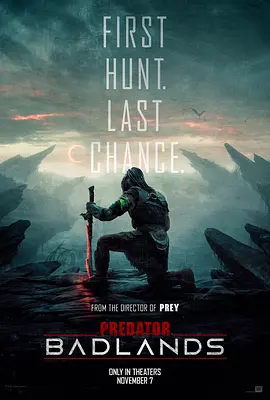Trailer Buzz
See AllThe Previews Everyone’s Watching — and Talking About Nonstop
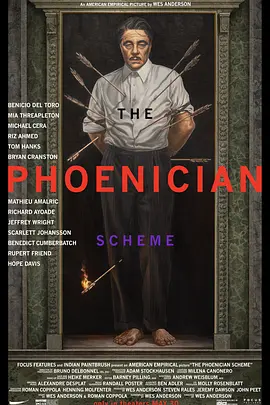
The Phoenician Scheme
Benicio del Toro, Mia Seppleton, Michael Cera, Tom Hanks, Bryan Cranston, Riz Ahmed, Mathieu Amalric, Jeffrey Wright, Richard Ayoade
In order to carry out a mysterious plan, Zsa-zsa Korda (Benicio del Toro), a European arms and aviation tycoon, appointed his nun daughter Liesl (Mia Thrumpleton) as the heir to his legacy. Another group of gangsters wanted to stop the tycoon, and chaos and killing began.
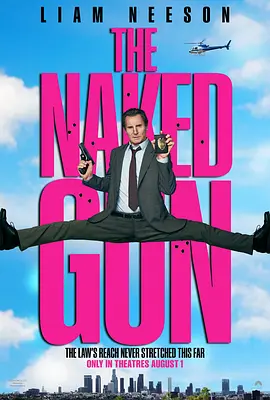
The Naked Gun
Liam Neeson, Pamela Anderson, Paul Walter Hauser, CCH Pounder, Danny Huston, Kevin Durand / Cody Rhodes...
Only one man has the particular set of skills - to lead Police Squad and save the world.
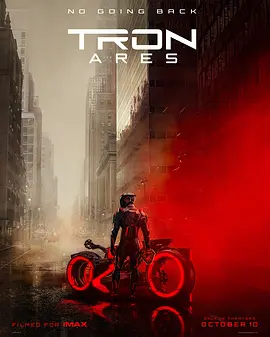
Tron: Ares
Jared Leto, Evan Peters, Greta Lee, Sarah Desjardins, Gillian Anderson, Jeff Bridges, Cameron Monaghan, Judy Turner-Smith, Arturo Castro
A highly sophisticated Program, Ares, is sent from the digital world into the real world on a dangerous mission.
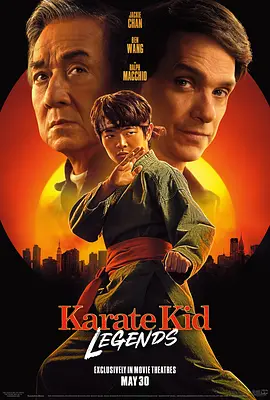
Karate Kid: Legends
Jackie Chan, Ban Wang, Ralph Macchio, Ming-Na Wen, Sadie Stanley, Wyatt Oleff, Shanette Renee Wilson, Joshua Jackson, Aramis Knight
Kung Fu teenager Li Feng (played by Wang Ban) just arrived in New York. He was bullied by the local karate champion for helping his friend out of trouble, so he decided to participate in the karate competition to win back respect. His former mentor Master Han (played by Jackie Chan) traveled across the ocean and brought karate master Daniel (played by Ralph Macchio) to help him. He turned New York into a training ground to start master training for Li Feng. Under the guidance of the masters, can Li Feng integrate the two martial arts schools, win respect with victory and open up his own martial arts?
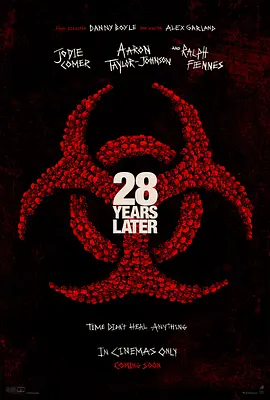
28 Years Later
Jodie Comer, Aaron Taylor-Johnson, Ralph Fiennes, Jack OConnell, Emma Laird, Erin Kellyman, Edwin Redding, Christopher Fulford
A group of survivors of the rage virus lives on a small island. When one of the group leaves the island on a mission into the mainland, he discovers secrets, wonders, and horrors that have mutated not only the infected but other survivors.
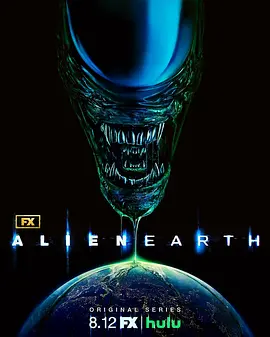
Alien: Earth
Sidney Chandler, Alex Lawther, Timothy Olyphant, Essie Davis, David Riddle, Sandra E. Sencindifer
When a mysterious space vessel crash-lands on Earth, a young woman and a ragtag group of tactical soldiers make a fateful discovery that puts them face-to-face with the planet's greatest threat.
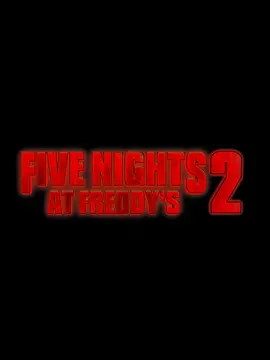
Five Nights at Freddy's 2
Matthew Lillard, Piper Rubio, Mark Fischbach, Kate Connor Sterling, Josh Hutcherson...
1987, after a rather unstable life, Jeremy Fitzgerald found work as a security guard at the new Freddy's Fazbear Pizzeria, but when he entered there he would realize that not everything there is as it seems.

Ballerina
Ana de Armas, Keanu Reeves, Anjelica Huston, Gabriel Byrne, Lance Reddick, Catarina Sandino Moreno, Norman Reedus, Ian McShane, David Castaneda, Sharon Duncan -Brewster, Anna Parejo, Abraham Popola, Mark Crumb, Robert Mather, Igawa Togo, Caleb Sipierraz
After her father was brutally murdered, the young girl Eve (Ana de Armas) was forced to join the killer organization, where she was trained to be a ballet dancer. At the same time, she received 12 years of devilish training to become a top killer, starting a bloody killing journey against her enemies. Not only did she have to complete the death mission assigned by the organization alone, but she also had to secretly collect information about the enemy who killed her father. The extreme danger of dying at any time and the joint encirclement of various forces made Eve's road to revenge extremely difficult. At the same time, she was targeted by the legendary killer John Wick (Keanu Reeves). The new and old killers met on a narrow road, and Eve had to kill her way out before being caught by John to complete her revenge. The dangerous countdown began, and a deadly fight was about to kick off a bloody prelude...
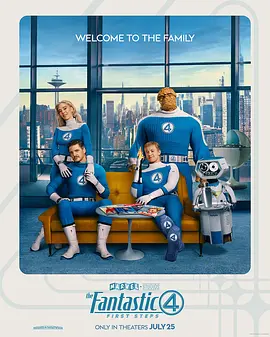
The Fantastic Four: First Steps
Pedro Pascal, Vanessa Kirby, Joseph Quinn, Ebon Moss-Bachrach, Ralph Ineson, Julia Garner, Paul Walter Hauser, John Malkovich, Natasha Lyonne, Sarah Niles
Set in a retro-future world inspired by the 1960s, Marvel's first family, Mr. Marvel (Pedro Pascal), the Invisible Woman (Vanessa Kirby), the Human Torch (Joseph Quinn) and the Thing (Ebon Moss-Bachrach), face their most daunting challenge yet. They must balance their heroic roles with family relationships while defending Earth from a greedy cosmic god named Galactus (Ralph Ineson) and his mysterious emissary, the Silver Surfer (Julia Garner). And when Galactus plans to devour the entire planet and everyone in it, no one can stay out.
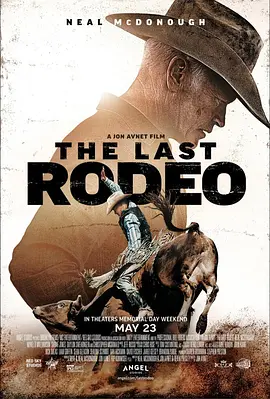
The Last Rodeo
Neal McDonough, Sarah Jones, Christopher McDonald, Mykelti Williamson
To save his grandson, a retired rodeo star enters a high-stakes bull-riding competition. Along the way, he confronts his past, discovers faith, and proves that true courage lies in family.
Top Reviewed
The Most-Loved Movies and the Reviews Fans Can’t Get Enough Of
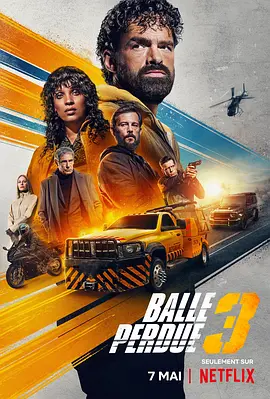
Balle perdue 3
This is the final chapter of the series. Leno swears to find Alesky and confront him.
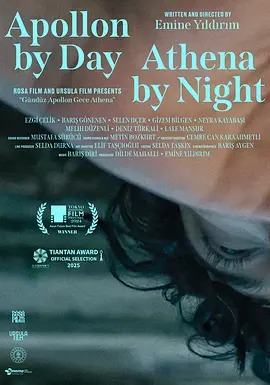
Gündüz Apollon Gece Athena
Defne travels to the ancient Mediterranean city of Side, where she meets a revolutionary, a prostitute, a priestess and other mysterious characters. Guided by them, she sets out to find the mother who abandoned her. This debut feature by promising female director Emine Yildirim is set in Side, an ancient Greek colony that was once a thriving port city near present-day Antalya. The two Greek deities in the title of the film Apollo by Day, Athena by Night are Apollo, the god of reason, and Athena, the goddess of wisdom, crafts and war. The film is a fantasy drama about women and men, the living and the dead.

The Witcher: Sirens of The Deep
Hired to investigate a series of attacks on a seaside village, Geralt of Rivia is a mutant monster hunter who is thrust into the middle of a centuries-old conflict between humans and merpeople. Relying on the help of friends old and new, he must solve the mystery before the hostility between the two kingdoms escalates into all-out war.
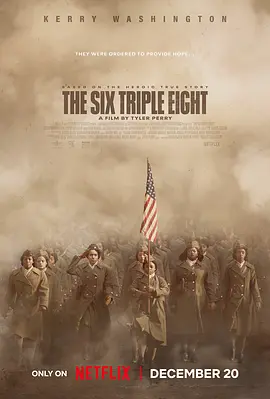
The Six Triple Eight
Six Triple Eight tells the inspiring and incredible true story of the first and only women’s regiment of courageous women of color stationed overseas during World War II. Facing racism and sexism, unfamiliar lands, and war-torn countries, they persevered, sorting more than 17 million pieces of mail in just three months, reconnecting American soldiers with their families and loved ones back home. The motto that kept these women going each day was one they coined: “No mail, low morale.” The women of the 6888th Central Postal Directory Battalion did more than facilitate the delivery of mail, they delivered hope. The story of the 6888th Central Postal Directory Battalion has been left out of history books and ignored by the nation at large — until now. On March 14, 2022, President Joe Biden signed legislation awarding these women Congress’ highest honor, the Congressional Gold Medal.
Voices from the Crowd
View AllReal Reactions. No Filters. Just Fans Speaking Their Movie Truths
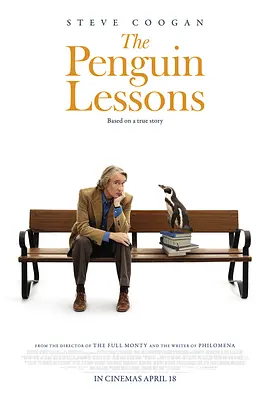
The Penguin Lessons
In terms of form, it is Jean Reno's "My Penguin Friend" + "Dead Poets Society". The story is about the real events of the penguins superimposed on the horror background of the military government, and an artificial warm ending that British movies are good at. This makes people feel that the creative logic of this story is because they feel that the real penguin class story is too thin, so they try their best to add multiple meanings to the existence of penguins. In the end, the penguin became the link between the protagonist and everyone, the emotional food of the students, and the secret weapon to turn danger into safety. At the same time, it also has to bear the protagonist's allusion to his feelings in an unfamiliar environment. This responsibility is a bit too heavy. The film's allusion to the military government is also implicit, and it is not well compatible with the main line. The girl's return in the end is very dramatic, which makes the story have a strong fairy tale attribute. If some choices are appropriately abandoned, and the filming in Buenos Aires (the set of the film is too unsuccessful) may help the film perform better. But then again, the old lady and granddaughter line (although it may be purely fabricated to a large extent) is still delicate and makes people cry.
Read Full Review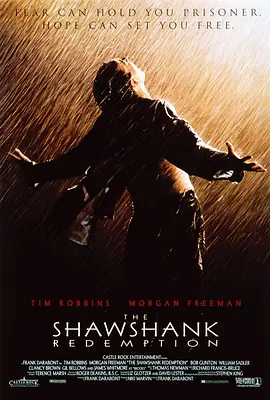
Cast & crew User reviews Trivia FAQ IMDbPro The Shawshank Redemption
At the Oscars that year, it was overshadowed by the towering presence of Forrest Gump, but over time, this film has surpassed Gump in the hearts of many. Whenever reality leaves me exhausted and powerless, I revisit this disc and reignite my dreams. Without a doubt, this film ranks among the top three must-watch movies for men! Recalling that iconic line: "Some birds’ feathers are too bright to be caged, even by the darkest prison."
Read Full Review
Kyuka: Before Summer's End
The square frame cannot contain the overflowing blue waves at the end of summer in August and September. There are too many ambiguous backgrounds and too many vague words. Only the real emotions and silent blanks revealed by the words and interactions can make people resonate with them. The father, who is both a father and a mother, took his twin children on a sailboat to a beach where he often took them when they were young, and also went to see his ex-wife whom he had not seen for many years without the children's knowledge. God knows how excited and expectant he was on this day, but he still guarded his pride as always, arguing with her half-heartedly, and carefully handed over the USB flash drive he specially prepared with the children's video recordings. He wanted her to know how he had diligently raised the children during her absence. Although his ex-wife broke her promise after seeing him, he still invited her family to his boat by coincidence, and had dinner with the children - they ate the fish he caught with his superb fishing skills. Another fisherman, his ex-wife's husband, who was also good at fishing, exposed him and said that all the fish were bought from the market. His last sense of honor was punctured, and his broken marriage experience, the parent-child relationship that could not be honest with each other, and the fact that he could not catch any fish made him sink into the sea with his boat in vain. The only lifeless dead fish caught by his daughter on this trip was actually the fisherman himself. As for the close twin brother and sister (or sister and brother), except for a turtle of the same age as themselves, the memory of their mother has long disappeared. The mother is absent, the father is taciturn, the two are partners, laughing and playing, with a single-parent family history that is not worth mentioning behind them and a useless youth that knows nothing in front of them. They are the brownies that are bitten into the mouth and then spit into the sea in disgust, the broken shells picked up by a five-year-old girl on the beach, and the deflated rubber boat without a shore in the Saronic Bay in the western Aegean Sea. Although they had stopped asking about their mother's whereabouts, when they realized that the woman in front of them was her, they waded across the shallow sea and tried to climb ashore on the boat called mother. The younger sister finally gave the boat ticket to the older brother. She thought that this older brother who liked skirts and nail polish should be more liked by the mother who still had charm. On the last day of summer, with a bright moon hanging high in the sky over the Saronic Bay, one ship set sail and another was fished out.
Read Full Review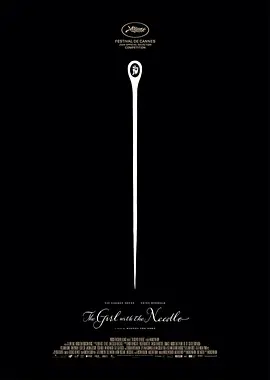
Pigen med nålen
Originally named "Dogmar the Killer", Danish serial killer Dogmar Overby killed 9 to 25 illegitimate babies entrusted to her care around 1918 under the guise of a childcare worker. In the film, she was adapted into a candy store owner who helped those who could not raise their own children during the Great Depression of World War I to kill their babies. The director was not interested in retelling a biopic about a serial killer. The film shifted the narrative perspective to a victim (participant) mother in the Dogmar case, a weaver girl, the owner of the needle in the title, but that was not her production tool. The film transforms from a simple biographical film into a dark fairy tale about forgotten and abandoned people, depicting the Gothic appearance of Copenhagen at the end of World War I: widespread unemployment and scarcity, scarce job opportunities, people disfigured by the war who can only play monsters in the circus, abortion is regarded as a sin, pregnant women are expelled from factories, and many illegitimate children with no future try to find a ray of hope in the iron-clad ethical society. The film uses the method of horror films to outline the plight of women who have no future, no backup, and no escape options. Because of this, Dogma, who has been tempered by life and is also broken, but still has humanity, is a fatal attraction to Zhinu. For her, it is easier to dance with the devil than to love her husband torn apart by war or a weak young master across classes. An expressionist nightmare that reveals the devastating truth hidden behind the veil of civilization.
Read Full Review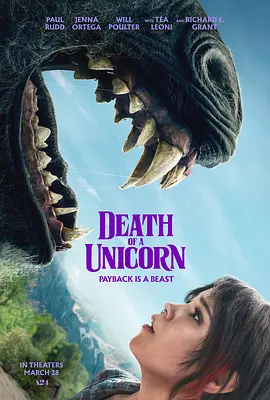
Death of a Unicorn
As mentioned before, the core setting of this movie is actually very interesting, and should have led to many exciting plots and creative ideas. However, I feel that the movie didn't really make use of this highlight. The overall feeling is a bit too conservative and too formulaic, which is a pity. Many plots are old hat, such as the tense father-daughter relationship and the extremely capitalist wealthy family, and the way these plots unfold lack novelty. From a visual perspective, the special effects of the unicorn are not particularly outstanding, but they have reached a qualified level. The presentation of the unicorn and the animation effects need to be improved, or more realistic alternatives need to be adopted and polished. A lot of times, it would have been better to simplify it, as many of the death scenes ended up being boring and predictable. The design itself is good and fits in with the overall style of the movie. The overall shooting level is also okay.
Read Full Review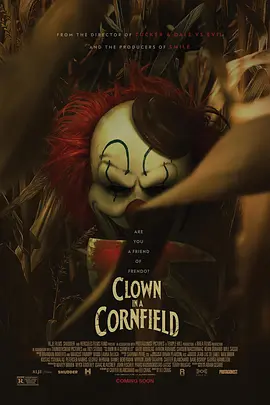
Clown in a Cornfield
Saw the opening voice-over: “I love men and the only thing better than one man is two men when they’re touching and kissing each other.”
Read Full Review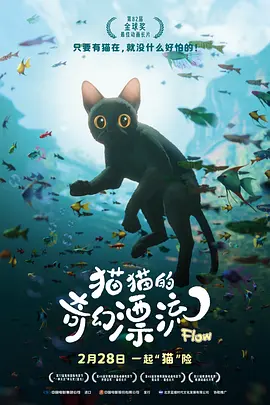
Straume
Flow is actually a very sad story. The aurora borealis appears in the tropics, floods come and go without a trace, survival is threatened at any time, and beloved things can be lost at any time. The galloping reindeer carries the message of the end of the world. In the cat's nightmare, it is an endless cycle, indicating that all life in the end of the world has nowhere to escape. The herd of deer roaring past again at the end is probably the precursor to the nightmare coming true. But why does this cartoon look cute, warm, and healing? Because the ignorance from the perspective of animals conceals the anxiety of survival in the end times. The black cat, Capybara, Labrador, lemur, and secretary vulture, these five animals carefully selected by the production team, do not have a predatory relationship with each other; except for the black cat and Capybara who are born to live alone, the other animals have either actively or passively left the group and lived in harmony on the "Noah's Ark", and even pulled each other and helped each other, which cast a layer of warmth on the end-of-the-world picture. And every time you stumble, you can always be caught by the kindness of other species, and every time you lose something, you will always get it back at an unexpected moment, as if nature also has some kind of mysterious warmth. Applying color on the background of sadness and despair, this is the unique healing power of romanticism. In this romantic drift, each animal pursues its own life agenda on the Ark. Their demands are intertwined, and each takes what it needs. The Ark becomes their small life community. Lemurs love the creations of human civilization. The magical transparent utensils (glass bottles), the hard and luminous regular devices (silver spoons), and the most fascinating magic that can show another self (mirrors) make lemurs crazy. The Ark is like a scale for lemurs. On one side are its treasures, and on the other side are life and death, and companions. It had two chances to return to its own tribe, but it gave up. Perhaps it realized that its own kind only love material things, and the alien companions on the Ark are the real belonging that can be pinned on. The secretary bird wanted to be in control. Because it insisted on carrying out its good intentions (protecting the cats), it fought with the leader, but was defeated, had its wings crippled, and was abandoned by the tribe. For the secretary bird, the Ark was like a power vacuum, and it naturally became the helmsman, the new temporary authority, and could act according to its own will. When the dogs boarded the ship, when things were beyond its control, it was the first to abandon the ship. Labrador longed for a master. The dogs that returned to the wild lost their allegiance and were fighting for their own survival, seemingly inheriting the dark side of both human and animal nature. Labrador's separation seemed to be due to the traces of domestication remaining in its body, and it tried to find the shadow of its master in the creatures of the Ark. It begged the secretary bird to play the parabolic game with it, imitated the movements of cats, wagged its tail, begged for food, and guarded everyone's sleep, and stayed with everyone until the last moment. Capibala is indeed selfless, it teaches everyone to give in to each other and live in peace, and there is nothing more important than eating and sleeping. In fact, Capibala is like the ark itself, and in the story it almost lives and dies with the ark - the first to board and the last to leave. Although cats are the absolute protagonists, their demands are the most ambiguous. If for lemurs, secretary birds and Labradors, the Ark is a place of belonging outside the tribe, and drifting is a practice of idealists, then for cats, what are the Ark and drifting? On the surface, the cat is the same as other creatures, except that it has never belonged to any group, so it just went through a process from being alone to having a partner, and finally ended up with everyone else, belonging to a sense of belonging alliance composed of different races. The film begins with the reflection of the cat in the water. This intention appears many times in the film. Before the danger comes and after the danger is gone, the cat looks at its reflection. Obviously, it is not Narcissus-like self-admiration, but it seems to have some loneliness and self-pity of a loner. At the end of the film, the reflection in the water is no longer a single person, but a family portrait. But if you think about it carefully, the bond between the cat and other animals is actually very limited before the final rescue scene. The role it plays on the ark is very unstable. When necessary, it will steer the rudder and catch food. When conflicts occur, it often even stays out of the event. So I tend to think that for cats, this drift is not only about finding a sense of belonging as a social animal, but also about seeking a sense of belonging as a solitary animal. Specifically, it comes down to the issue of human settings and religious symbols. Although the film does not explain the human part, we can judge from the ruins that human civilization has probably developed to the level of ancient Rome, with a venue that can accommodate thousands of people, a pillar like a holy mountain, and cat statues of various models around the human hut where the cats originally lived. Is it some kind of cat worship, or the owner of the house just likes cats very much? It is not even known what the relationship between the animals here and humans was, such as whether the dogs were domesticated dogs by humans, and whether the cats themselves were fed by the owner of the house. But it is obvious that humans have either become extinct or have evacuated the earth in a mysterious way similar to the collective disappearance on the holy mountain. Regarding religion, the most recognizable element is Noah's Ark. However, unlike the betrayal-faith, punishment-forgiveness, disaster-salvation, destruction-rebirth symbolized by Noah's Ark in the Bible, the Ark in this film is more like a temporary, even one-time place, a refuge for survival in the end of the world, and a private reserve for idealists who avoid materialism, barbarism and authoritarianism. Rather than calling it "Noah's Ark", it is better to say that these animals are all abandoned by Noah and left on the earth by humans to fend for themselves, so the animals themselves formed a small boat for self-rescue. It is spontaneous, temporary, and unstable. There is no punishment or blessing from God's will, but only the coldness and kindness from the unknown forces of nature; there is no promised land of hope, but some are signs of the next flood; of course, there is no Noah-like leader or organizer, but only a spontaneous alliance of animals. Of course, the Ark always symbolizes hope, but this hope is eventually destroyed. After the flood receded, the once hopeful Ark became a dangerous place and fell into the abyss before the next flood came. The second thing that can be detected is the divine implication of the secretary vulture. Since the secretary vulture took the helm, the Ark seemed to be heading purposefully towards the tallest building in sight, those towering mysterious pillars, or holy mountains. The holy mountain is a sacred image that appears in many religions. It is the abode of God and a place where one can communicate with God. In the end, the secretary vulture disappeared from the center of a mysterious formation on the holy mountain, but the cat fell back to the ground. God accepted the secretary vulture but not the cat, or the vulture found its ultimate home, but this did not constitute the ultimate home of the cat. Therefore, for the cat, humans and all possible bonds between humans and cats are not their destination. The gods guided by the secretary bird are not their destination either. The peace and love alliance between different races advocated by Capybara seems to be the destination given at the end of the film, but in fact it is unlikely to last forever. In this sense, the deeper sadness of the film is revealed under the apocalyptic atmosphere: the answer that the cat finally sees is that there is no destination. Even the mysterious kindness from nature is not a destination - the giant whale that saved them twice was finally stranded on the flat ground where the flood receded and was dying. The cat witnessed its death with his own eyes. The kindness between animals is so touching in the background of sadness. In the hint of despair, the family portrait reflected in the water, and the giant whale entering the waves under the sunset after the subtitles rolled, are the echoes of true romanticism. Of course, the cat in the film, as an animal, does not actually have the subjective consciousness of seeking self-meaning and ultimate destination, but the self-image that appears again and again in the water seems to imply the meaning of self-care, although this meaning is quite vague and ambiguous. This brings us to the biggest problem of this film - the improperly placed human perspective. No dialogue, no anthropomorphism, and a completely animal perspective are already very fresh innovations in today's world where Disney and Hollywood animations are dominant. In particular, there is no extra explanation of the whereabouts of humans, which is a very restrained and subtle treatment, which largely supports the credibility of the animal perspective. However, the animals in the film are far from real animals. Although they are not anthropomorphic in body, expression, movement and language, they do have both animality and human nature, and the animality among them is very human. For example, "dog nature" is equal to liking to play parabolic games, and "cat nature" is equal to liking to chase light spots. The "camera" in the film sometimes takes the subjective viewpoint of cats, but most of the time it follows the cats like an intelligent tracker, which is very much like the viewpoint of a natural photographer-the viewpoint of humans peeping at animals. Therefore, the whole film has a kind of embarrassment of wandering on the border of "animal world", "cute pet world" and "animal fable", not knowing where to land first, and the audience will feel confused between the sense of voyeurism and the sense of substitution accordingly. However, after all, the audience is all human, and the anthropocentric perspective problem between humans is probably easy to forgive. What's more, this is such a beautiful but not greasy, sad but not hurtful, simple but not simplistic cat adventure. Moreover, who doesn't love a doomsday healing road movie these days? Who hasn't been at the end of their own world? Who doesn't want the leap of faith they are forced to take to be caught by warm kindness? Who doesn't want an ark to accommodate their idealism? Therefore, since both the desire to voyeurism and the sense of immersion can be satisfied at the same time, as a viewer, there is no need to worry about anything.
Read Full Review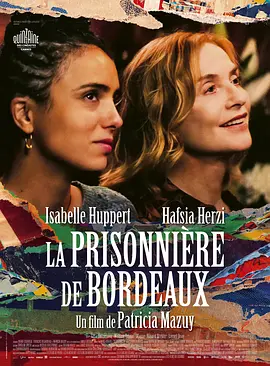
La prisonnière de Bordeaux
9.28 Pingyao The title is obvious. Even if the husbands are in prison, their ghosts (mixed with capitalist economy and patriarchy) still linger in the society where women live - the house. Men are prisoners in prison, and women are prisoners in the house. Therefore, the two women made completely different choices. The noblewoman fled with the artworks, allowing the artworks hanging in the villa to break free from the above discipline; while the poor returned to the prison to visit the prisoner with the spoils of parasitizing the rich, hoping to return to the patriarchal survival order. Although they seem to be completely different, they are actually the upgraded version of "Nora" with different paths to the same destination: artworks are not survival materials. The former may still starve to death if she escapes with artworks; while the latter is the successful begging version of Nora who returns and strengthens the poor family. On this basis, the lesbian elements and the betrayal in the bathroom make girls help girls, a humanistic theme that transcends class and race, generate more reflexive thinking, that is, sometimes people want respect and emotion or material compensation. If the latter is enough, then what is the so-called mutual help and confrontation, and how to do it? Therefore, leaving with the artwork is a metaphorical response to the question of "Nora": after material abundance, can we escape the old gender order, and how do we face the hesitation and meaning loss brought by the deeper new gender order in our hearts. It's like the paintings in those movies. When they are not trapped in the circulation of the art market and the homes of men, how will their value be reflected and where will they go. These movies don't seem to try to respond, but only use a slightly contrasting ending to summarize: the rich escape, the poor reunite. Such an ending does not cater to the current slogan-style network-style "feminist" theme in any sense, but allows this doctrine to self-transform and self-betray under a small ambition, thereby enhancing the overall perception of the movie, which is concise and pleasant. Therefore, it is understandable that its shots and stories are lackluster.
Read Full Review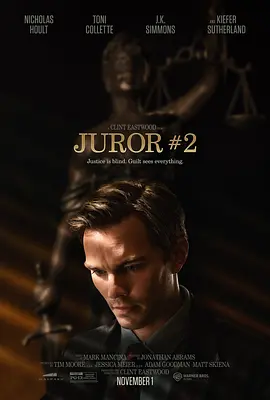
Juror #2
When everyone thought that in his last film, Toki, as the "beneficiary" of the current political context, was going to stage a smug right-wing victory settlement, he actually went the other way and provided some progressive reflections in "Juror No. 2": for example, in the jury, the field where identity politics can be set up the most, the two most "stubborn" defenders of traditional family values (to some extent representing ignorant and stubborn rednecks) are played by black people; and when the defendant uttered the classic scumbag confession "I'm not the guy anymore, I have changed" in the stand, what quickly flashed by was the silent sneer of the two female prosecutors who knew the truth - a typical female subject perspective. In fact, this unprecedented thinking is by no means a trick. As the jury debate deepens, the film seems to be following the classic path of "12 Angry Men" and its many variations (it's funny, the opening scene of the female prosecutor picking up the phone even perfectly pays tribute to He Bing picking up the documents at the end of "12 Citizens"), and the early exposure of the male protagonist's crime breaks this pattern - what Dong Mu tries to do is to put everything in a swaying state. The so-called "rigorousness" has become a prejudice, and the theme of "justice" throughout the film has unexpectedly become a stumbling block to revealing or covering up the truth. This ambiguity takes root and sprouts meticulously all the way until the last scene, when it suddenly changes its form. Through the gaze of the ending, the simple moral binary opposition in "Sully" or "Richard Jewell" is re-exposed. In Toki's values, there is and only one "correct" way of moral narration. On this level, "Juror No. 2" has never hesitated in morality or conscience. This is a firm conscience. For this reason, the skepticism about moral truth in "12 Angry Men" is actually opposed and even abandoned by this film. The last time this kind of complementary and inseparable justice and truth appeared in a concentrated manner seems to be traced back to Fritz Lang (and the day I watched the movie was his birthday). So everything ends with such a gaze that follows the moral values of the black film nearly a hundred years ago. There is no more perfect farewell than this. From the gaze, we see the adhered traditions, ancient ethics and principles, and the fate of this country - after all, don't forget the identity of the male protagonist, he is the most decent conservative white male protagonist in Dongmu's usual narrative, and his evil has been planted from the beginning. Just like the close-up of the scale that appears in the opening animation and runs through the whole film, the old man has completed an atypical patriotic reflection in this way that is consistent with and breaks the self.
Read Full ReviewInstall Our App
Get quick access to reviews, save your favorites, and receive notifications about new reviews for the movies you love.
- Access reviews offline
- Get notified about new reviews
- Save your favorite movies
- No app store required
For iOS devices:
- Tap Share button
- Scroll and select "Add to Home Screen"
- Tap "Add" to confirm

Frequently Asked Questions
Everything you need to know about trailers and reviews on our site
How do I find a specific trailer or review?
Use the search bar at the top of the site to look up a movie by name. You can also filter by genre, release date, or popularity on the search or homepage.
How often is content updated?
New trailers and reviews are added regularly. We update trending trailers daily, and major new releases are typically posted within 24 hours of their official drop on YouTube.
Can I download the videos?
No, downloads are not available due to YouTube’s usage policies. However, you can easily share any trailer or review using the built-in social share buttons.
Why is a trailer not playing or buffering slowly?
Make sure your internet connection is stable. You can also try switching video quality in the player settings—most trailers support 720p, 1080p, and sometimes 4K.
Are the videos hosted legally?
Yes. All trailers and video reviews on our site are embedded from official YouTube sources. We do not host or modify any content directly.




